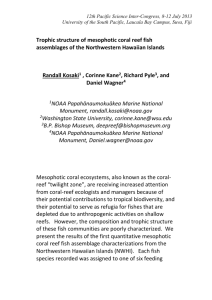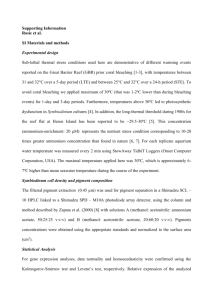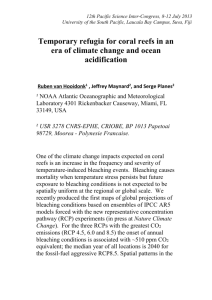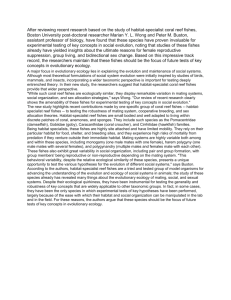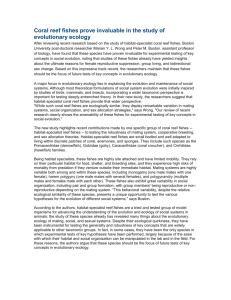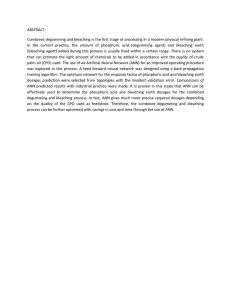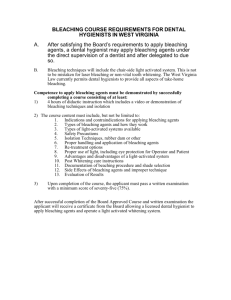Changes in composition and functioning of reef fish assemblages
advertisement
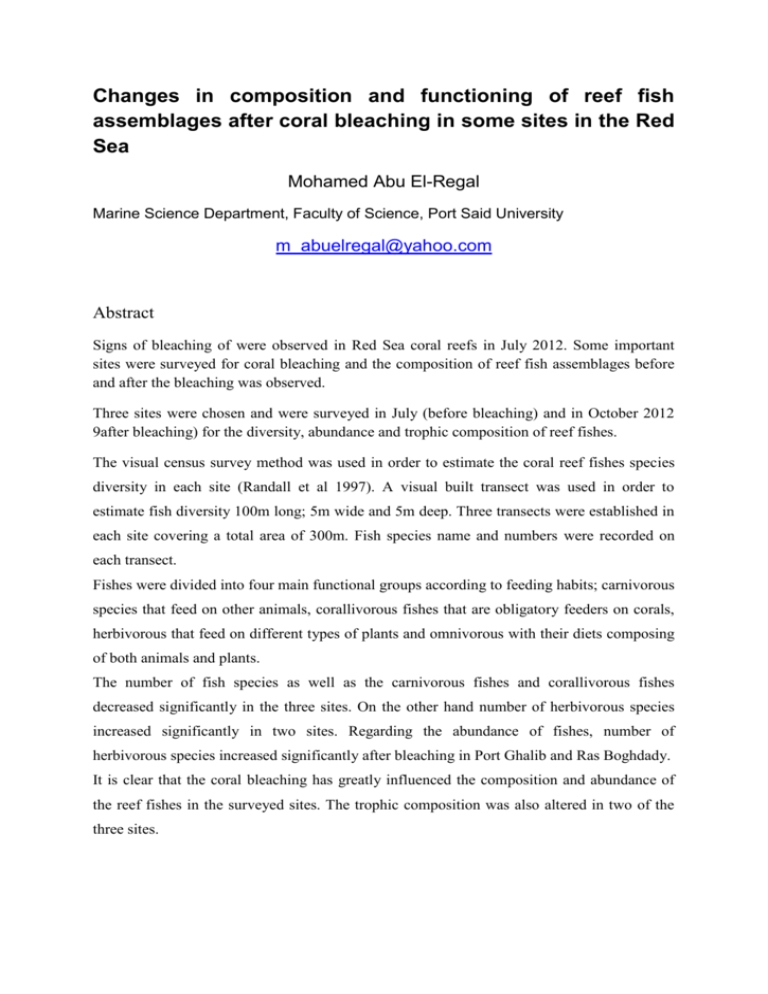
Changes in composition and functioning of reef fish assemblages after coral bleaching in some sites in the Red Sea Mohamed Abu El-Regal Marine Science Department, Faculty of Science, Port Said University m_abuelregal@yahoo.com Abstract Signs of bleaching of were observed in Red Sea coral reefs in July 2012. Some important sites were surveyed for coral bleaching and the composition of reef fish assemblages before and after the bleaching was observed. Three sites were chosen and were surveyed in July (before bleaching) and in October 2012 9after bleaching) for the diversity, abundance and trophic composition of reef fishes. The visual census survey method was used in order to estimate the coral reef fishes species diversity in each site (Randall et al 1997). A visual built transect was used in order to estimate fish diversity 100m long; 5m wide and 5m deep. Three transects were established in each site covering a total area of 300m. Fish species name and numbers were recorded on each transect. Fishes were divided into four main functional groups according to feeding habits; carnivorous species that feed on other animals, corallivorous fishes that are obligatory feeders on corals, herbivorous that feed on different types of plants and omnivorous with their diets composing of both animals and plants. The number of fish species as well as the carnivorous fishes and corallivorous fishes decreased significantly in the three sites. On the other hand number of herbivorous species increased significantly in two sites. Regarding the abundance of fishes, number of herbivorous species increased significantly after bleaching in Port Ghalib and Ras Boghdady. It is clear that the coral bleaching has greatly influenced the composition and abundance of the reef fishes in the surveyed sites. The trophic composition was also altered in two of the three sites.
